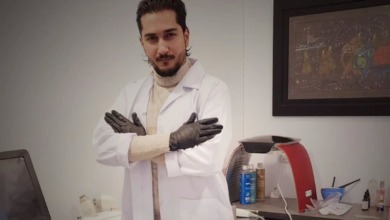Learn All About What Is a Radiologist?

What is a Radiologist that are medical professionals specializing in the use of medical imaging techniques to diagnose and treat diseases and injuries. They play a crucial role in the healthcare system by providing essential information to aid in the decision-making process for patients’ treatment.
Role of Radiologists in Healthcare
Radiologists are often called “doctors’ doctors” because they work behind the scenes, collaborating with other medical specialists to interpret imaging results. They are responsible for:
- Reviewing and interpreting medical images.
- Providing reports and recommendations based on their findings.
- Assisting in guiding treatment plans.
- Using their expertise to help diagnose a wide range of medical conditions.
Education and Training of Radiologists
Becoming a radiologist is a long and rigorous process. It typically involves:
- Completing a bachelor’s degree with a focus on pre-medical courses.
- Attending medical school to earn an MD or DO degree.
- Completing a residency in diagnostic radiology.
- Optional sub-specialization through a fellowship program.
- Obtaining board certification.
Types of Radiology
Radiology can be broadly categorized into two main types:
Diagnostic Radiology
This involves the use of various imaging techniques to diagnose and monitor medical conditions. Common diagnostic radiology techniques include:
- X-ray Imaging: Utilizing ionizing radiation to create images of the body’s internal structures.
- Ultrasound: Using high-frequency sound waves to visualize soft tissues.
- CT Scans: Combining X-ray and computer technology for detailed cross-sectional images.
- MRI (Magnetic Resonance Imaging): Employing strong magnetic fields and radio waves to produce detailed images of the body’s structures.
Interventional Radiology
Interventional radiologists perform minimally invasive procedures guided by imaging. They use various techniques to treat conditions and diseases, such as:
- Procedures and Techniques: Angioplasty, embolization, and more.
- Applications: Treating blockages, tumors, and vascular conditions.
The Importance of Radiologists
Radiologists are essential in modern medicine as they help clinicians accurately diagnose and plan treatments. Their role significantly reduces the need for exploratory surgeries, making healthcare more efficient and cost-effective.
Radiology Equipment and Technology
The field of radiology continually evolves, with advancements in imaging technology. Radiologists work with state-of-the-art equipment such as digital X-ray machines, 3D mammography, and high-field MRI scanners to enhance their diagnostic accuracy.
Challenges Faced by Radiologists
Radiologists face high workloads, pressure to maintain accuracy, and rapid technological advancements. They must stay updated with the latest trends in radiology.
Future Trends in Radiology
The future of radiology is promising, with developments like artificial intelligence assisting in image analysis, telemedicine for remote consultations, and improved imaging techniques.
How to Become a Radiologist
To become a radiologist, you must follow a comprehensive educational path. This includes completing medical school, residency, and obtaining the necessary certifications.
Radiologist vs. Radiologic Technologist
It’s important to note that radiologists and radiologic technologists are different roles. Radiologic technologists operate imaging equipment, while radiologists interpret the results and make diagnoses.
Radiology in Everyday Life
Radiology is not limited to the medical field. It also plays a role in airport security, industrial testing, and even art restoration.
Radiology in Disease Diagnosis
Radiology is pivotal in diagnosing fractures, tumors, cardiovascular diseases, and more. It helps doctors make informed decisions about patient care. Read more…
Conclusion
In conclusion, what is a radiologists that are highly trained medical professional who use cutting-edge technology to diagnose and treat a wide range of medical conditions? Their expertise is invaluable in modern healthcare.
Frequently Asked Questions (FAQs)
- What is the difference between a radiologist and a radiologic technologist?
- Radiologists interpret medical images, while radiologic technologists operate imaging equipment.
- How long does it take to become a radiologist?
- Becoming a radiologist typically takes around 12-14 years of education and training.
- What are the challenges faced by radiologists?
- Radiologists face challenges like a high workload and staying updated with evolving technology.
- Are there sub-specializations in radiology?
- Yes, radiologists can choose to sub-specialize in areas like neuroradiology or interventional radiology.
- How is AI changing the field of radiology?
- Artificial intelligence is improving image analysis, making diagnosis more efficient and accurate.




